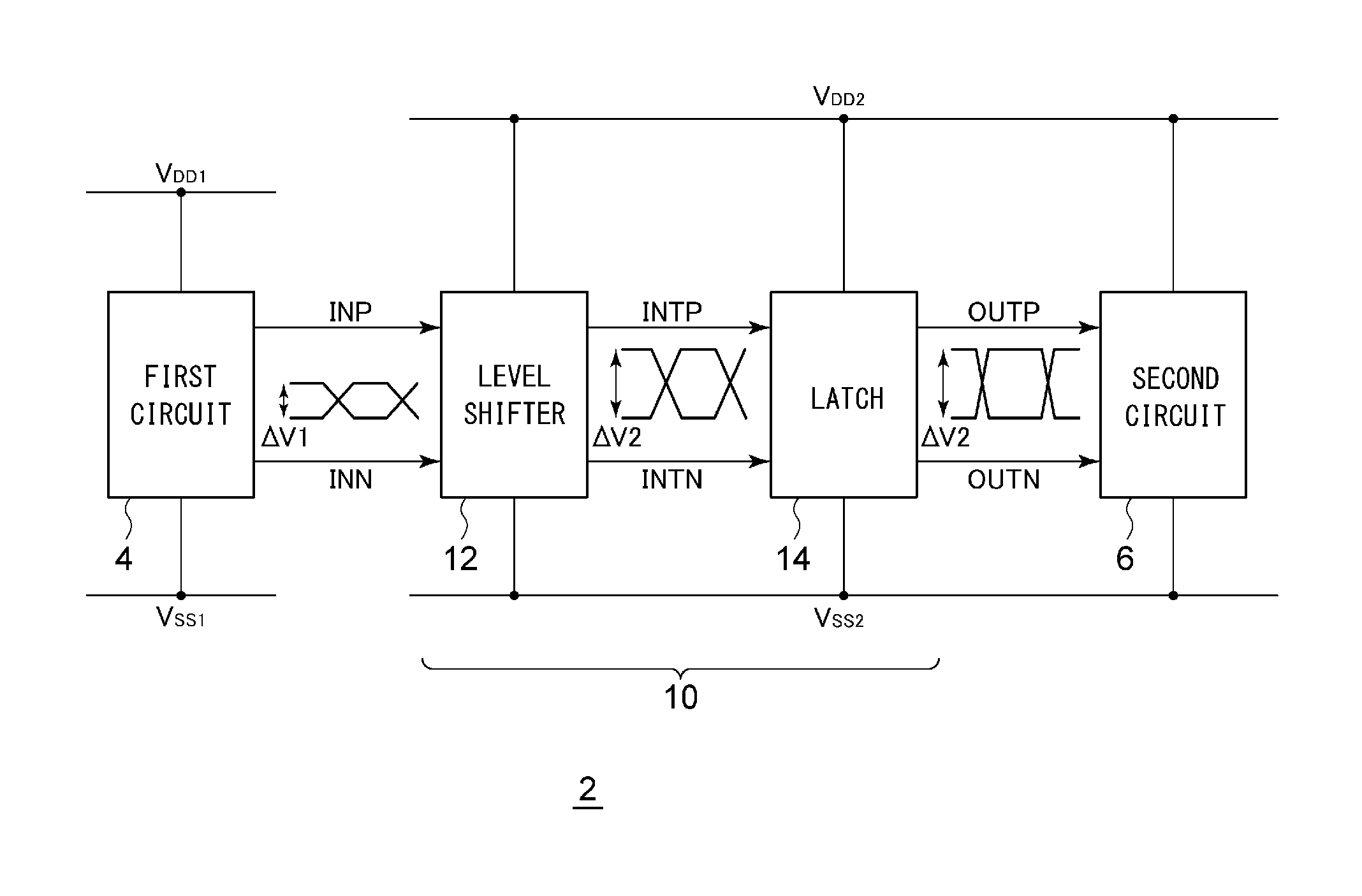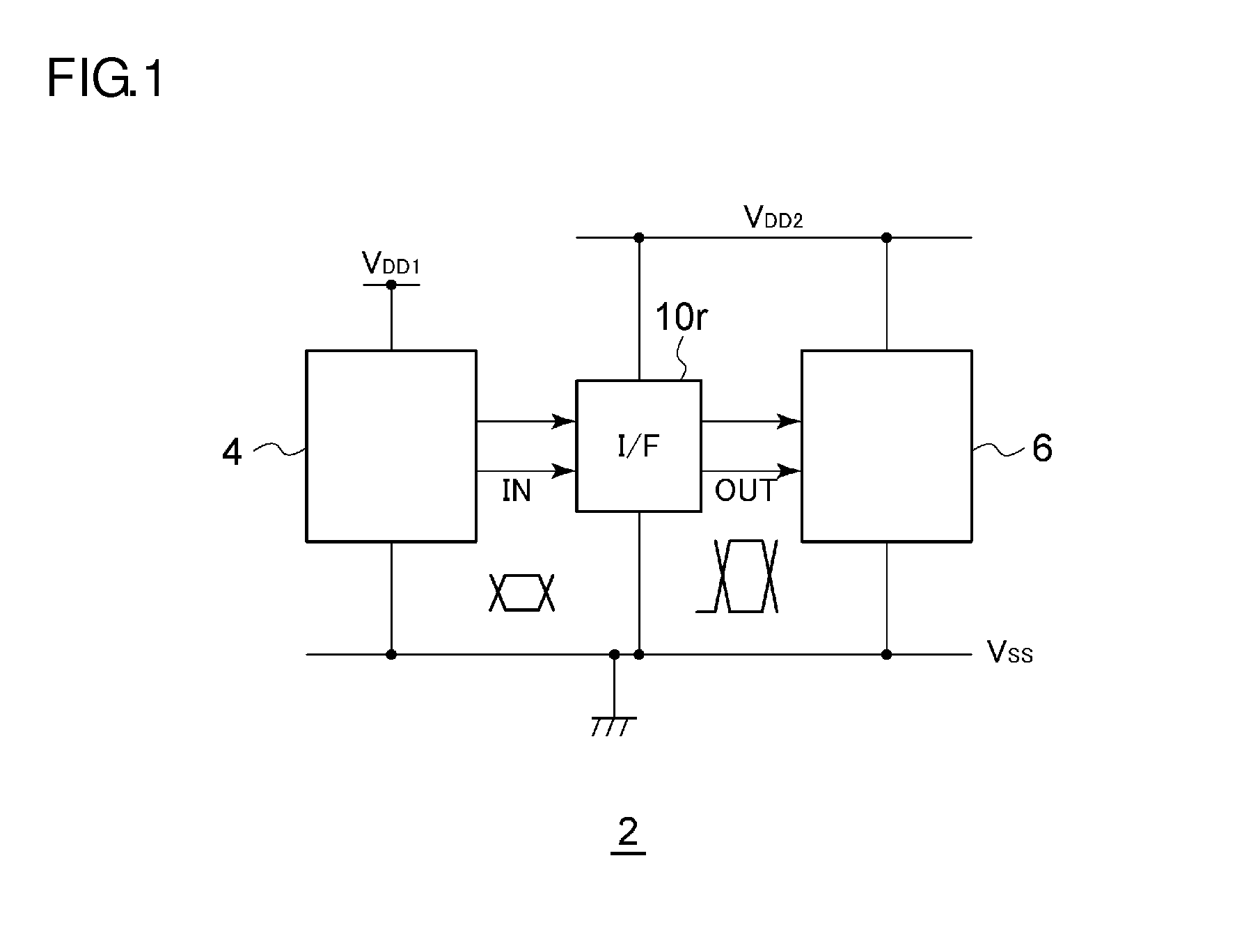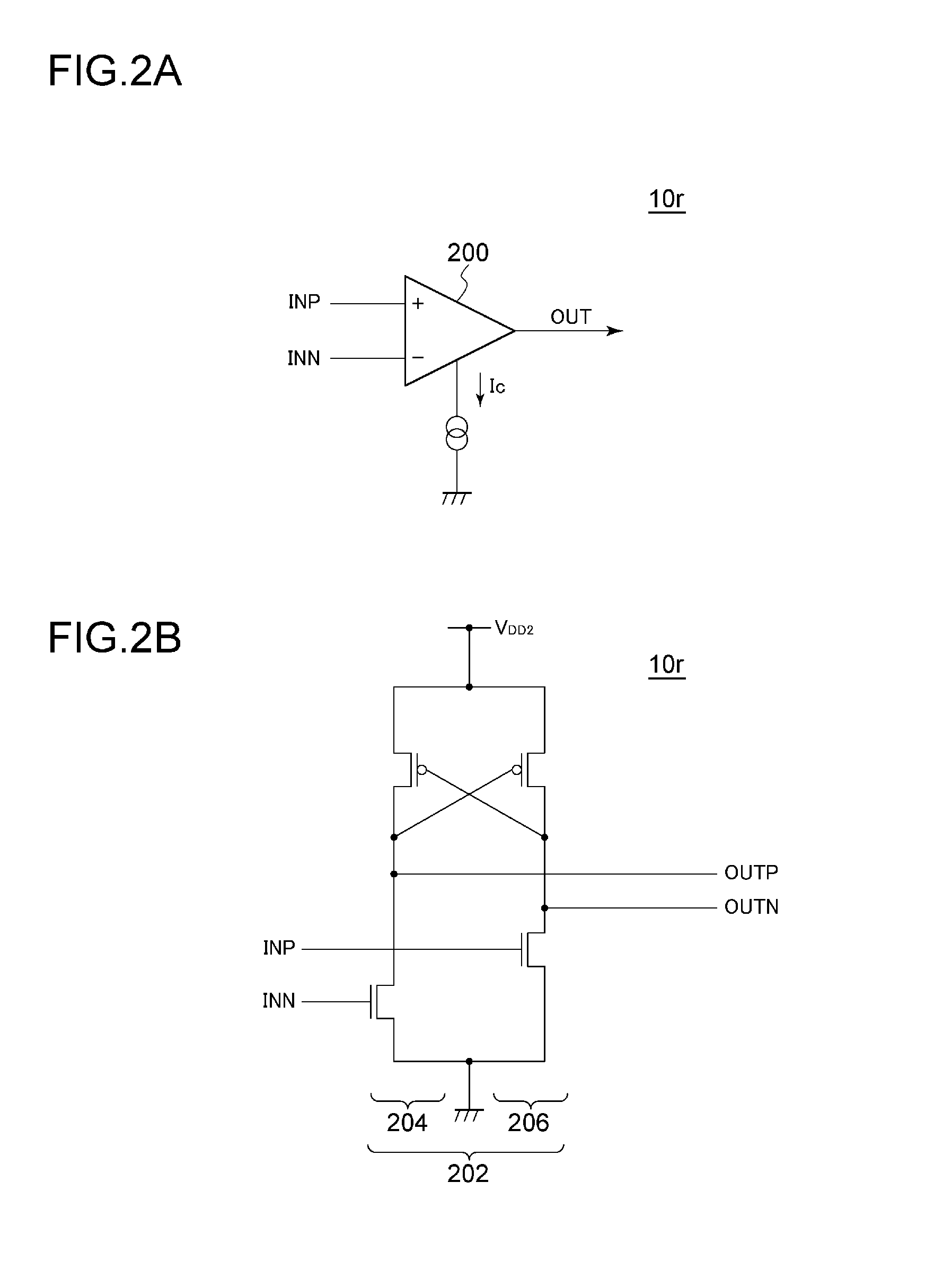Interface circuit
a technology of interface circuit and interface arrangement, applied in the direction of logic circuit coupling/interface arrangement, pulse manipulation, pulse technique, etc., can solve the problems of large power consumption, unsuitability of arrangement, current loss, etc., and achieve the effect of reducing power consumption and high speed
- Summary
- Abstract
- Description
- Claims
- Application Information
AI Technical Summary
Benefits of technology
Problems solved by technology
Method used
Image
Examples
first modification
[0093]FIG. 8 is a circuit diagram showing the interface circuit 10 according to a first modification. The interface circuit 10 includes the level shifter 12 having a configuration that differs from that shown in FIG. 4.
[0094]The first feature is that the interface circuit 10 further includes a third NMOS transistor MN3 and a fourth NMOS transistor MN4. The third NMOS transistor MN3 is interposed between the first NMOS transistor MN1 and the first PMOS transistor MP1. The positive signal INP of the input signal IN is input to the gate of the third NMOS transistor MN3. The fourth NMOS transistor MN4 is interposed between the second NMOS transistor MN2 and the second PMOS transistor MP2. The negative signal INN of the input signal IN is input to the gate of the fourth NMOS transistor MN4.
[0095]By interposing the NMOS transistors MN3 and MN4 arranged such that the input signal is input to their gates, such an arrangement is capable of reducing the effect on the input signal IN of a para...
second modification
[0099]In FIG. 8, the third NMOS transistor MN3 and the fourth NMOS transistor MN4 may be omitted, and only the fifth PMOS transistor MP5 and the sixth PMOS transistor MP6 may be provided. Conversely, only the third NMOS transistor MN3 and the fourth NMOS transistor MN4 may be provided, and the fifth PMOS transistor MP5 and the sixth PMOS transistor MP6 may be omitted.
third modification
[0100]FIG. 9 is a circuit diagram showing the interface circuit 10 according to a third modification. In this modification, the input signal IN to be received by the level shifter 12 is configured as a binary signal that switches between VDD1 as high level and VSS as low level. The interface circuit 10 has the same basic configuration as that of the interface circuit 10 shown in FIG. 4. That is to say, the interface circuit 10 includes the level shifter 12 configured as an upstream stage and the latch circuit 14 configured as a downstream stage.
[0101]The first CMOS inverter 20 includes the first NMOS transistor MN1 and the first PMOS transistor MP1. The positive signal INP of the input signal IN is input to the gate of the first NMOS transistor MN1. The gate of the first PMOS transistor MP1 is connected to the output of the second CMOS inverter 22.
[0102]Similarly, the second CMOS inverter 22 includes the second NMOS transistor MN2 and the second PMOS transistor MP2. The negative sig...
PUM
 Login to View More
Login to View More Abstract
Description
Claims
Application Information
 Login to View More
Login to View More - R&D
- Intellectual Property
- Life Sciences
- Materials
- Tech Scout
- Unparalleled Data Quality
- Higher Quality Content
- 60% Fewer Hallucinations
Browse by: Latest US Patents, China's latest patents, Technical Efficacy Thesaurus, Application Domain, Technology Topic, Popular Technical Reports.
© 2025 PatSnap. All rights reserved.Legal|Privacy policy|Modern Slavery Act Transparency Statement|Sitemap|About US| Contact US: help@patsnap.com



